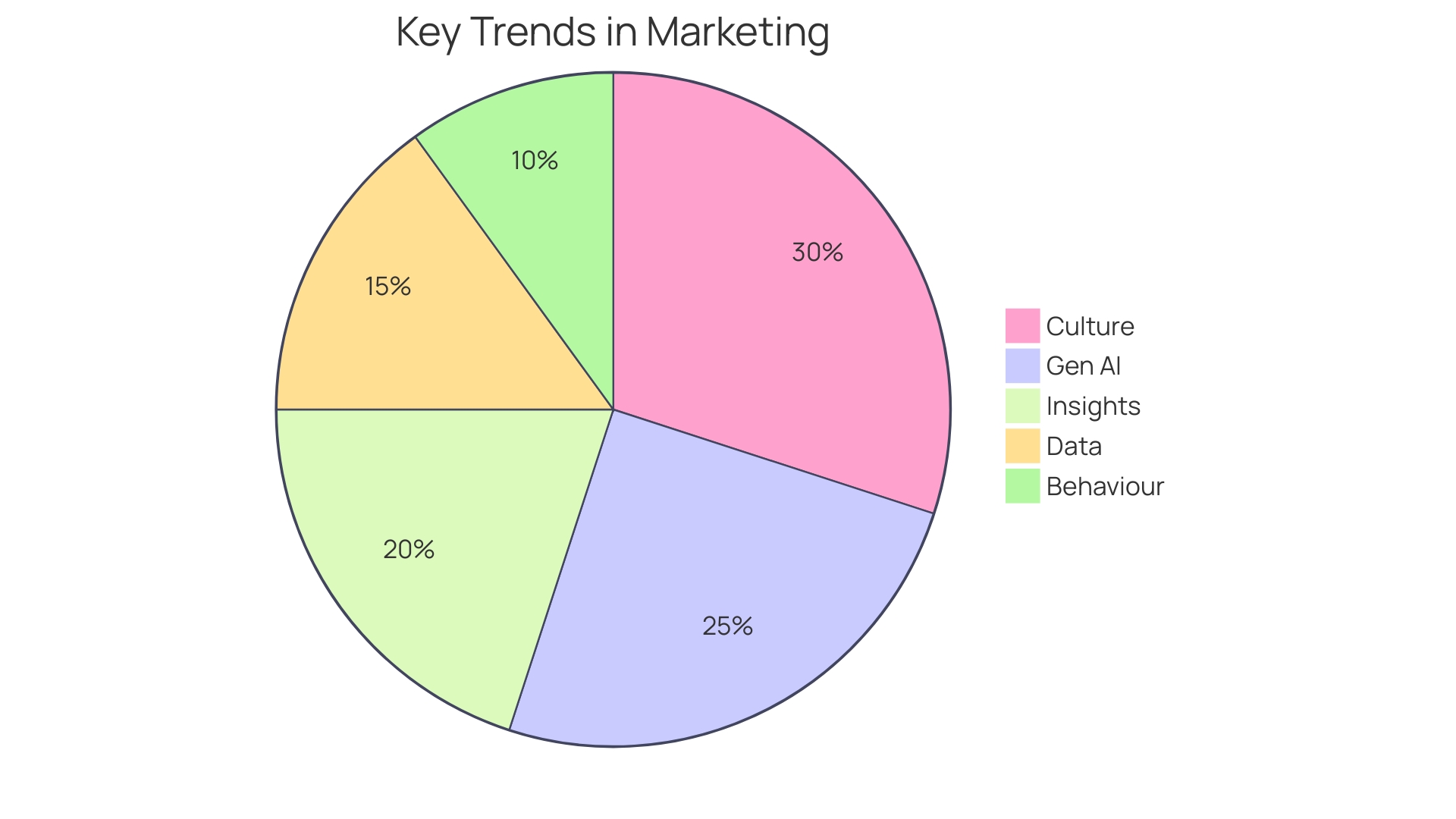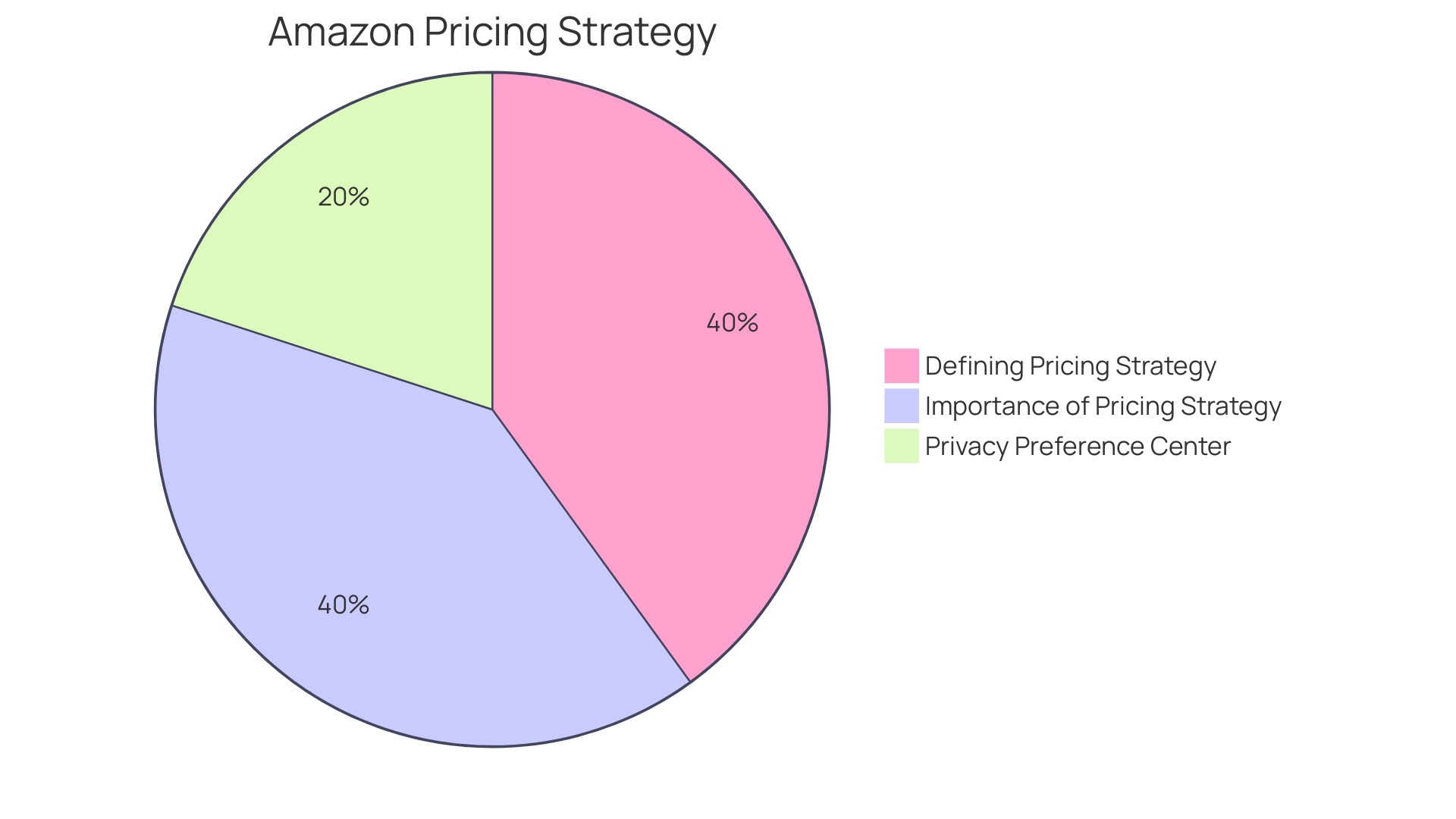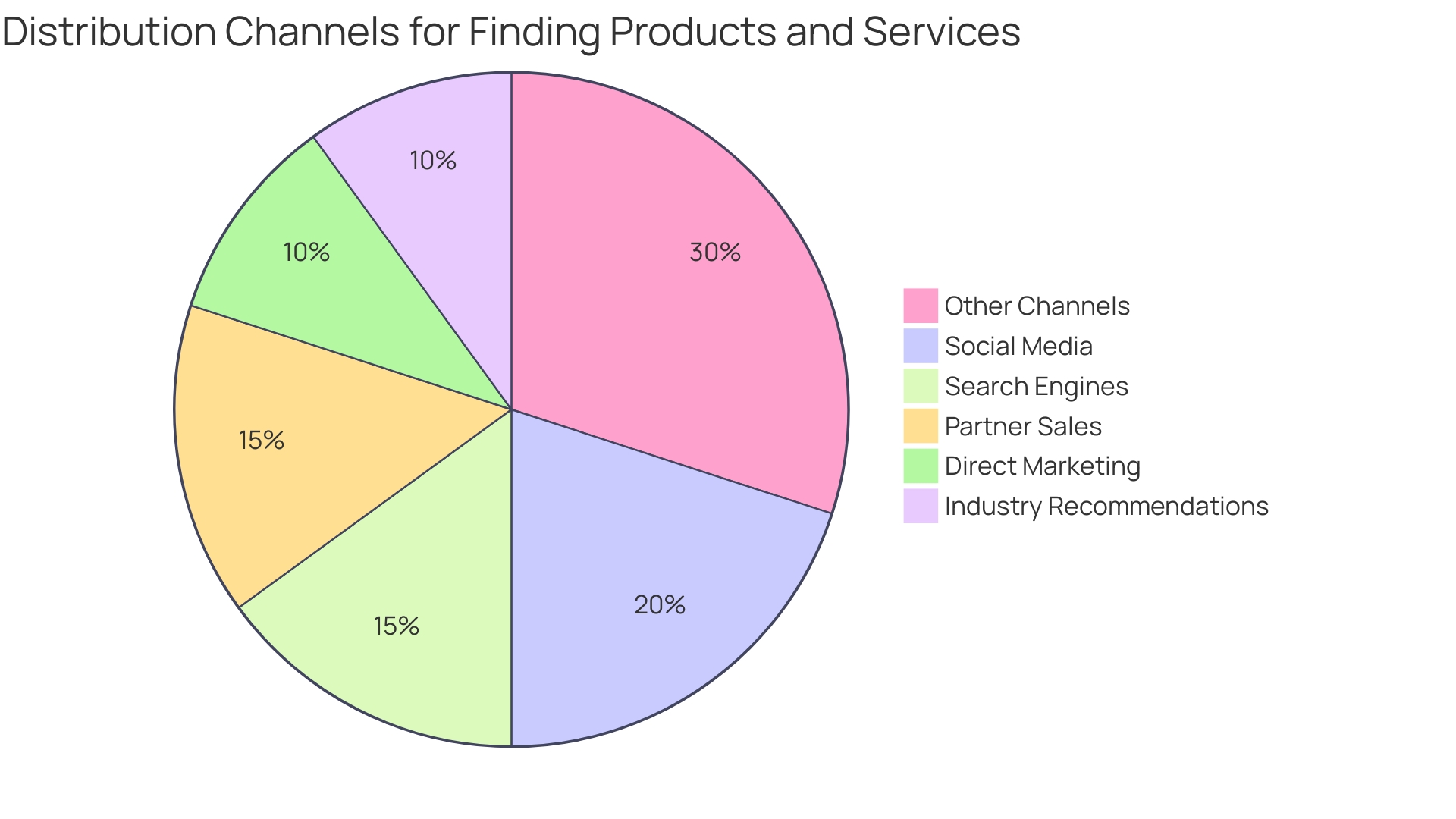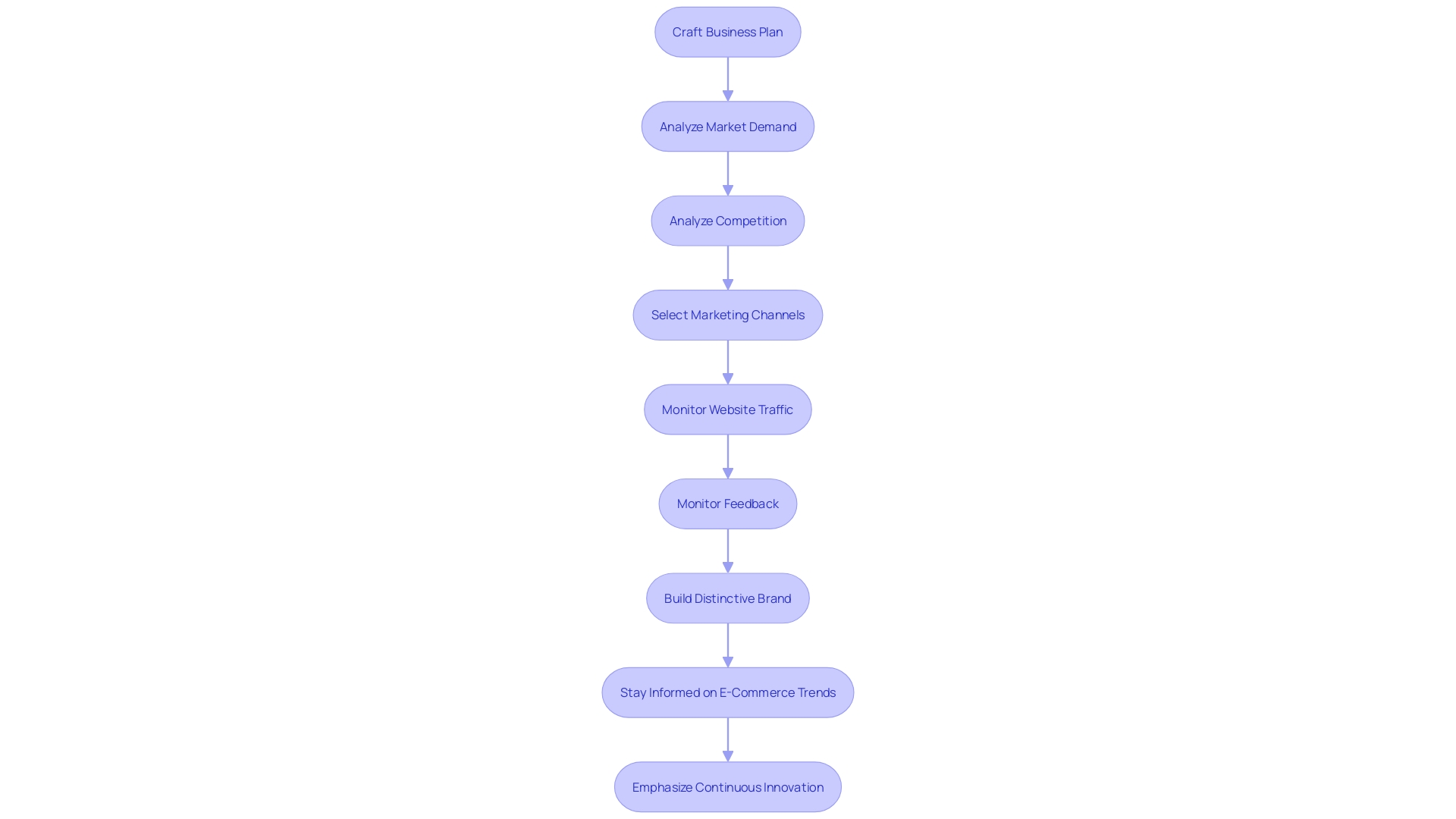Introduction
Launching a successful online retail business requires careful planning and strategic decision-making. From finding your niche market to creating a strong brand identity, each step plays a crucial role in your venture's success. In this article, we will explore the essential steps to establish an online retail business, providing expert advice and recommendations.
By following these guidelines, you can position yourself as an industry expert and navigate the competitive e-commerce landscape with confidence. Let's dive in and discover how to create a thriving online retail business.
Find Your Niche and Market
Identifying a niche market is an essential step in launching a successful online retail venture. A niche is a distinct segment within a broader market, defined by its own unique needs, preferences, and identity. To pinpoint your niche, consider what you're passionate about and explore whether there's a demand for it. Ask yourself who would be interested in your offerings and what makes your passion stand out. Engaging in this discovery process serves as the cornerstone of your business strategy.
Once you have a clear understanding of your niche, it's time to delve into market research. This involves getting to know your potential customers intimately—their likes, dislikes, and challenges they face. By understanding the details of your target audience, you can customize your offerings or services to tackle their specific concerns, providing a solution that's not easily accessible elsewhere.
As the retail landscape shifts away from traditional storefronts to digital platforms, your online presence should cater directly to consumer needs with a diverse array of products. This strategy is not just about selling but also about establishing a relationship with your clients. For example, a company such as Divvies took advantage of the opportunity within the vegan and nut-free market segment, forming a loyal following with their specialized offerings.
The growth of eCommerce across different industries indicates the significance of having an online enterprise that can adjust and flourish in the digital realm. With 14 distinct markets, including beverages, food, and household essentials, the digital arena offers endless opportunities to innovate and reach customers globally. Beginning with a well-researched niche and a clear company name, you can establish a brand that resonates with your audience and meets the evolving demands of the retail industry.
Conduct Market Research and Identify Target Audience
Market research, a blend of both science and art, is critical for an online retail or dropshipping business. One must not only collect data through surveys and focus groups but also interpret it to uncover patterns and forecast trends. For instance, a customizable forecasting model developed for Filson's e-commerce sales for the 2023 Holiday Season predicted sales with a remarkable 99.6% accuracy. This precision is invaluable for strategic planning and highlights the importance of detailed, ongoing analysis rather than one-off reports.
Primary research is essential, especially when exploring new markets. Surveys, one of the most utilized research methods, can reveal crucial opinions and behaviors of individuals. MCoBeauty's success with influencer marketing, which propelled exponential growth and facilitated international expansion plans, underscores the significance of understanding and targeting the right audience.
It's surprising that only 42% of marketers are confident about their audience's basic demographics. Continuous exploration of market research can help fill these gaps. For example, analyzing the nuances of the target audience based on their demographics, interests, and behaviors can lead to more effective marketing campaigns, just as MCoBeauty has demonstrated.
Furthermore, eCommerce spans various markets, making it essential to identify and understand the specific segment you are entering. Whether it's beverages, food, or household essentials, each has unique dynamics and customer expectations. By leveraging primary research and ongoing analysis, businesses can gain a competitive edge and ensure their marketing efforts resonate with their intended audience.

Check Regulations and Legal Requirements
When initiating an online retail venture, it's not just about choosing a catchy name or eye-catching design; it's equally critical to understand and adhere to the legal landscape of e-commerce. Compliance with digital accessibility standards, for example, is not just ethical but, with the recent enactment of the European Accessibility Act, a legal imperative. This act underscores the importance of making e-commerce platforms usable for all, including the 27% of Europeans living with disabilities.
As the digital marketplace expands, so does the range of products, with digital goods being one of the fastest-growing categories. Your platform must be accessible to everyone, including those utilizing assistive technologies, to tap into this burgeoning market effectively. It's about more than just following the law; it's about inclusivity and expanding your potential client base.
Furthermore, taxation, cross-border trade, and customer data protection are areas where regulations are rapidly evolving. The E-Commerce Trade Commission's initiatives to educate small enterprises on these matters emphasize the necessity for a comprehensive comprehension of international trade policy and logistics.
To this end, registering your enterprise and domain name represents the first concrete step in establishing your brand identity. This process is essential, as it's not just about securing a name, but also about ensuring that your organization aligns with your values and target audience. As you navigate through domain registration and beyond, keep in mind the words of industry veterans: the accuracy and completeness of your business's legal compliance are significant factors that can either propel you towards success or hinder your progress.
In summary, prior to launching your e-store, a thorough review of e-commerce laws, an investment in digital accessibility, and strategic planning for international trade will lay a solid foundation for a legally sound and inclusive e-commerce platform.
Source Your Products and Suppliers
When starting an online retail business, identifying a specific market and comprehending your target customers sets the foundation for the subsequent crucial stage: obtaining merchandise and forming supplier connections. It's important to recognize reliable suppliers who can consistently deliver high-quality items at competitive prices. Seek out those who provide a wide range of offerings, ensuring you can effectively cater to your niche.
Consider utilizing wholesale suppliers who purchase in large volumes from manufacturers, securing discounts which are then passed on to retailers like yourself. This model has been a cornerstone in the retail sector since the 19th century and continues to be essential to the supply chain, offering items at price points not usually accessible to the general public.
To find trustworthy wholesale suppliers, employ a mix of strategies: - Conduct online searches with specific product keywords to uncover suppliers. - Explore online wholesale directories that compile lists of suppliers on a global scale.
Moreover, the rise of dropshipping has introduced a low-overhead business model. By collaborating with dropshipping suppliers, you can sell items without managing inventory, as suppliers ship directly to buyers. However, this comes with less control over shipping times and inventory management.
In today's fast-paced e-commerce landscape, exemplified by the burgeoning quick commerce sector projected to reach $40 billion by 2027 in the U.S. alone, consumers expect rapid delivery. Aligning with suppliers who can support such demands is vital.
Always keep in mind that the supplier you choose can greatly influence the success of your store on the internet. Our methodology for selecting the best dropshipping suppliers for small businesses involves rigorous criteria, emphasizing product quality and variety, as these are paramount to meeting customer expectations and fostering business growth.
In an industry where brand owners witnessed a growth exceeding 20% in sales on platforms like Amazon in 2022, it's evident that investing time and effort in establishing a strong supplier relationship and a sturdy digital presence is indispensable for attaining significant milestones in the competitive world of e-commerce.

Create Your Brand and Unique Selling Proposition (USP)
To stand out in the bustling online retail landscape, establishing a distinctive brand and a unique selling proposition (USP) is pivotal. Consider the success story of Gothrider Coffee, where founder Phil Kyprianou transitioned from the events industry to e-commerce. He tapped into the coffee market after noting its lack of distinctive brands and, with strategic partnerships, launched a brand with an edgy, rebellious identity that resonates with a specific audience.
Similarly, as a marketing communications manager for Dollar House, you're tasked with crafting a digital marketing campaign for a new private label skin care line. Dollar House's strong presence in both urban and rural markets, coupled with its reputation for value, provides a unique opportunity to position the new product line in a way that leverages the brand's existing strengths.
When developing a brand identity, it's essential to incorporate core values, personality traits, and visual elements that collectively resonate with your target demographic. For instance, the ZOTZ bike brand appeals to the fearless, blending urban style with the ruggedness of mountain technology.
Moreover, current trends highlight the significance of quick commerce and brand trust. With consumers valuing speedy delivery and trustworthiness, as evidenced by Amazon's growth in brand sales and trust rankings, your USP could emphasize these aspects to attract and retain buyers. Consistently conveying the core values and unique selling proposition of your brand on different platforms is vital to promote brand awareness and develop a thriving retail enterprise.
Create an Online Store and Set Up Infrastructure
Establishing a prosperous retail venture on the internet is similar to navigating a ship through the digital sea; it requires a strong hand and a clear vision. Selecting the right e-commerce platform is the foundation for this journey, one that must resonate with your brand's unique ethos and financial scope. Consider the extraordinary path of Gothrider Coffee, where founder Phil Kyprianou translated his digital marketing prowess into a distinctive brand that stands out in the crowded coffee market. The secret lies in establishing an online atmosphere that reflects your brand's identity, providing individuals with an instinctive and captivating shopping experience. Integration of secure payment solutions is crucial, as emphasized by Amazon's dependence on established credit card systems, ensuring trust and convenience for individuals. Moreover, a robust inventory management system cannot be overlooked, as it is instrumental in maintaining a seamless operational flow. Keep in mind the importance of a mobile-friendly design, as echoed by eCommerce statistics showing the prevalence of purchases made on smartphones and tablets. Finally, improving your order fulfillment process is crucial for cultivating satisfaction and loyalty, as exemplified by the innovative checkout-free experience at Dublin's Town To Go store, which transforms the conventional shopping model with its swift and hassle-free service. When these elements combine, they form the pillars of a smooth and efficient shopping experience that can weather the evolving tides of eCommerce.

Showcase and Price Your Products
Enhancing your e-commerce approach entails more than just establishing a store; it's about showcasing your merchandise in a manner that connects with buyers. High-quality pictures and detailed explanations are essential in presenting the worth of your items, enabling individuals to completely understand their characteristics and advantages. When considering pricing, it is crucial to grasp the idea of 'value pricing,' which involves setting your prices based on the perceived worth of your offerings in the eyes of buyers. Although value pricing is an ideal, it's achievable through various models and can be approximated by considering how your offerings create value within organizations. This approach ensures that if your offering provides greater value, the price accurately reflects that without the need for renegotiations.
Incorporating competitive pricing tactics, such as discounts or special promotions, can also be a magnet for attracting and retaining individuals. For example, the recent rise in video game popularity, as reported in trending lists, suggests that pricing strategies in this niche could include bundling games with accessories or offering limited-time discounts to capitalize on market trends. Regularly refreshing your product listings maintains their appeal and can lead to increased customer engagement.
Moreover, crafting a pricing strategy is not just about setting numbers; it's a comprehensive approach that considers market conditions, consumer spending power, and brand reputation. As emphasized by experts, a well-planned pricing strategy can greatly contribute to a consistent revenue stream and enduring growth. Remember, the goal is to maintain competitive pricing while ensuring profitability, a challenge highlighted by businesses navigating the complexities of the eCommerce landscape. By staying informed about industry trends and preferences, you can refine your pricing approach to meet the evolving demands of the online retail market.

Develop a Marketing Plan and Strategies
To excel in the competitive e-commerce landscape, a robust marketing strategy is paramount. By selecting the right mix of marketing channels tailored to your audience—be it through SEO, social media, or email marketing—you can significantly enhance your brand's reach. Furthermore, incorporating influencer collaborations into your strategy can tap into new networks and build credibility. A dynamic content marketing approach can also cultivate a devoted client base by offering captivating, valuable content that resonates with your audience's interests and needs.
Monitoring the performance of your marketing initiatives is equally important. Utilize data analytics to track the success of your campaigns and to refine your strategies, ensuring they yield the best possible results. This will help you to make informed decisions, pivot when necessary, and maximize the impact of your marketing efforts.
Case studies indicate the necessity of a concrete marketing plan. For example, our Learning Path platform and RACE Growth System provide tools for organizations to strategize, oversee, and enhance their marketing, particularly in digital spaces which are crucial for continuous achievement.
In today's retail environment, diversification of sales channels and innovative retail experiences, like those of MediaMarkt's 'Lighthouse' concept stores, are reshaping customer engagement. This, coupled with the fact that digital retail advertising is expected to exceed $140 billion globally, underscores the importance of a sound marketing strategy.
Remember, not updating your plan can hinder growth. It's crucial to regularly evaluate your market position, financial health, and future objectives within your plan. Additionally, branding is critical. Investing in a recognizable brand helps to differentiate your business and is a key growth driver.
In essence, a successful e-commerce venture begins with a thoughtful selection of products or services, driven by market demand and competitive analysis. As the industry evolves, so should your strategies, maintaining a focus on growth and customer loyalty.

Optimize Your Website for SEO and User Experience
For any online retail or dropshipping venture, the lifeblood is organic traffic, which is primarily driven by adept search engine optimization (SEO) and an exceptional user experience. To begin with, thorough keyword research is indispensable. By understanding the language and search queries of your target audience, you can tailor your content to match their needs, ensuring your products and services are easily discoverable.
The importance of website performance cannot be overstated. A site that loads swiftly and smoothly across all devices, especially mobile, is paramount. This not only improves user satisfaction but also contributes to better search engine rankings. In fact, statistics show that slow websites could significantly impede sales, with businesses potentially missing out on billions during peak shopping periods due to delays as minor as one second in page load times.
Moreover, navigation should be intuitive and straightforward, enabling visitors to find what they are looking for with minimal clicks. This aspect of user experience is becoming increasingly crucial as we witness innovations like checkout-free stores, which prioritize speed and convenience, reshaping customer expectations in the retail space.
Content is king in the digital realm, and regular updates with fresh, high-quality content can establish your authority and keep visitors coming back. Videos, infographics, podcasts, and interactive tools can complement traditional blog posts, making your site a hub of engaging and shareable content.
Furthermore, pages showcasing merchandise must be finely tuned to differentiate themselves in search results. This means going beyond keyword stuffing and ensuring that product descriptions, images, and other elements are optimized to provide value to the consumer. This approach not only helps with SEO but also aligns with the changing landscape where consumers begin their buying journey, seeking informative content that addresses their questions before making a purchase decision.
Lastly, accessibility is a pivotal component of a user-friendly website. It's essential to cater to the needs of all users, including those with disabilities. This is not just a matter of inclusivity, but it also serves as a wise practice, as disabled individuals and those with accessibility needs make up a substantial portion of potential customers.
By implementing these strategic measures, your retail or dropshipping venture can draw in more organic traffic, deliver an exceptional user experience, and ultimately, attain greater triumph in the competitive e-commerce domain.
Launch and Monitor Your Online Retail Business
With the right preparations, launching an online retail venture can be a triumphant experience. It starts with a well-crafted business plan that continuously evolves to mirror your market standing, financial health, and future objectives. Your selection is pivotalâanalyze market demand using tools like Google Trends and social media to gauge consumer interest. Observe the competition as well, comprehending their offerings, pricing, and marketing tactics.
When you're ready to announce your launch, embrace a diverse array of marketing channels to capture your audience's attention. Keep a close watch on website traffic, conversion rates, and feedback to measure your impact. This is not just about launching; it's about adapting and refining your strategies in response to market dynamics.
In today's e-commerce landscape, branding is your signature. A distinctive, memorable brand will not only attract customers but also foster loyalty, expediting product roll-outs and boosting profits. Stay informed with the latest e-commerce trends and technologies to ensure your business remains at the cutting edge. As you navigate the e-commerce ecosystem, remember that continuous innovation is key to sustained growth and success.

Conclusion
Launching a successful online retail business requires careful planning and strategic decision-making. From finding your niche market to creating a strong brand identity, each step plays a crucial role in your venture's success. Identifying a niche market and conducting thorough market research are essential to tailor your products or services to address the specific pain points of your target audience.
Understanding and adhering to the legal landscape of e-commerce, such as digital accessibility standards and regulations, is crucial for a legally sound and inclusive online business. Sourcing products from reputable suppliers and establishing strong supplier relationships are key to delivering quality products at competitive prices.
Establishing a distinctive brand and unique selling proposition (USP) is pivotal in the competitive online retail landscape. Incorporate core values, personality traits, and visual elements that resonate with your target demographic. Selecting the right e-commerce platform, setting up infrastructure, and optimizing your website for SEO and user experience are essential for a smooth and efficient online shopping experience.
Developing a robust marketing plan and strategies, including utilizing various marketing channels and incorporating influencer collaborations, can significantly enhance your brand's reach. Monitoring the performance of your marketing initiatives and utilizing data analytics to refine your strategies are crucial for maximizing impact.
Launching your online retail business requires the right preparations and a well-crafted business plan. Continuously adapt and refine your strategies in response to market dynamics. By following these essential steps and strategies, you can position yourself as an industry expert and navigate the competitive e-commerce landscape with confidence.
Establish a thriving online retail business that resonates with your audience and meets the evolving demands of the retail industry.





